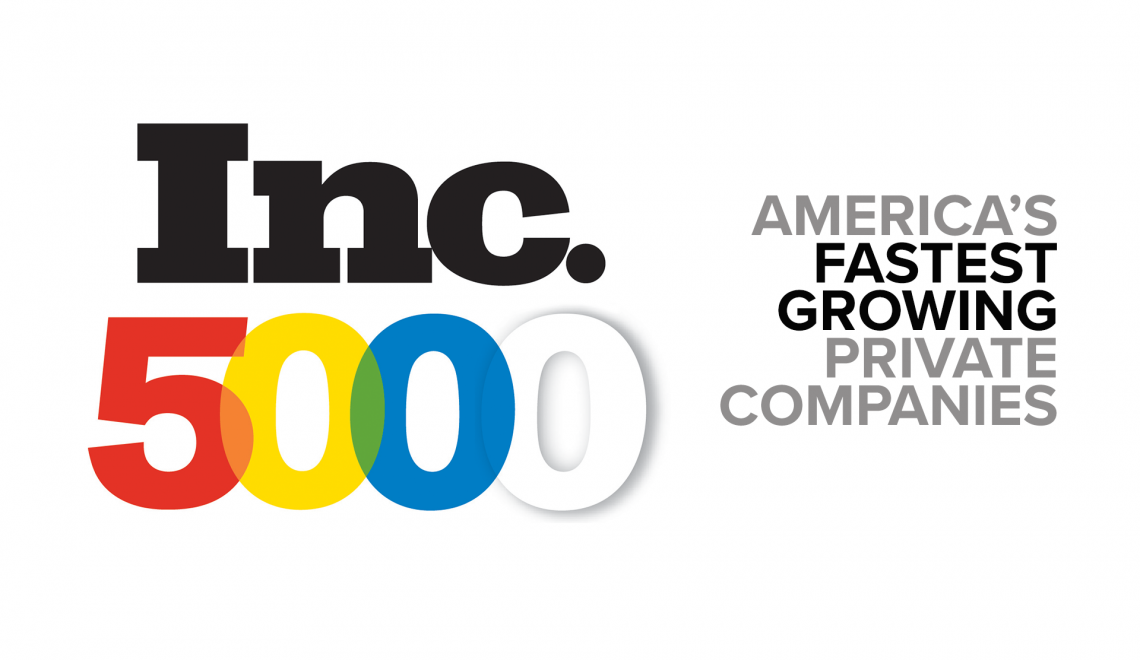News
Efficiency Hub: Maximizing Operations in Warehousing

The Imperative of Operational Efficiency in Warehousing
The imperatives of operational efficiency in warehousing resonate as the lodestar guiding modern logistics towards a epoch of unrivaled productivity and streamlined efficacy. As industries navigate the labyrinth of logistical exigencies, they embrace a pantheon of strategies and methodologies, from automation to layout design, to foster a citadel of operational excellence and logistical alacrity.
Thus, the epoch of maximizing operations in warehousing heralds an era where the confluence of technological adeptness and logistical finesse becomes the fulcrum upon which the logistics echelons converge, unfurling a saga where the optimization of warehousing operations becomes the sine qua non in fostering a legacy of logistical resilience and operational exuberance.
Automation: Redefining Logistical Precision
Automation stands as the vanguard of logistical precision, delineating an epoch where the assimilation of automated storage and retrieval systems (AS/RS), autonomous guided vehicles (AGVs), and robotic order pickers coalesce to sculpt a bastion of logistical alacrity and operational finesse within the heart of warehousing domains.
As industries harness the aegis of automation, they burgeon as stewards of logistical efficacy, thereby consecrating an epoch where the synergy of mechanized dexterity and logistical artistry becomes the lynchpin in fostering a legacy of operational precision and logistical conviviality amidst the crucible of logistical tumult.
Layout Design: Orchestrating Warehousing Ergonomics
Layout design serves as the linchpin of warehousing ergonomics, exemplifying the zenith of logistical exactitude where the fusion of optimized storage layouts, pedestrian-friendly pathways, and strategic inventory placement coalesce to sculpt a theater of warehousing opulence and operational finesse.
By embracing the aegis of layout design, logisticians and warehouse managers immerse themselves in a saga where the artistry of logistical craftsmanship and the symphony of warehousing precision become the hallmarks of operational excellence and logistical exuberance, thereby unfurling a saga where the sanctity of warehousing innovation and precision becomes the lynchpin in fostering a legacy of logistical opulence and operational conviviality.
Industrial Storage Solutions: Elevating Efficiency and Scalability
Industrial storage solutions stand as the bedrock of enhanced efficiency and scalability within the warehousing sector, epitomizing an era where the seamless integration of innovative storage systems, such as high-density pallet racking, modular shelving units, and climate-controlled storage, revolutionizes the paradigms of space utilization and inventory management.
By adopting advanced storage methodologies, warehouses transform into bastions of operational agility, where the optimization of space not only maximizes storage capacity but also significantly amplifies the velocity of goods through the supply chain.
Consequently, this strategic endeavor in redefining storage protocols ushers industries into a domain where scalability aligns with the dynamic demands of the market, thereby ensuring a legacy of resilience and proficiency in the face of evolving logistical challenges.
Inventory Management: Bridging Precision and Parity
Inventory management bridges the chasm between precision and parity, unfurling a saga where the amalgamation of just-in-time (JIT) methodologies, barcode scanning systems, and RFID technologies coalesce to proffer an oasis of logistical prudence amidst the crucible of operational tumult.
By harnessing the lore of inventory management, industries burgeon as stewards of logistical conviviality, thereby consecrating an epoch where the synergy of operational tradition and technological innovation becomes the fulcrum upon which logistical legacies and operational heritage converge, heralding an era where the optimization of warehousing operations becomes an indomitable citadel against the tumultuous tempest of logistical transformation and operational evolution.
Sustainability Initiatives: Sustaining Logistical Resilience
Sustainability initiatives epitomize the paragon of sustainability and logistical resilience, delineating an epoch where the assimilation of eco-friendly packaging, energy-efficient warehouse lighting, and sustainable inventory practices coalesce to sculpt a bastion of logistical sustainability and operational fortitude amidst the crucible of environmental stewardship.
As industries embrace the aegis of sustainability initiatives, they marshal an era where the pantheon of sustainable logistics and operational thrift converge to bestow an assurance of logistical sustainability and ecological equilibrium, thus heralding a realm where the apotheosis of sustainable warehousing practices becomes an indomitable citadel against the specter of logistical waste and environmental exigencies.
Conclusion
The trajectory of maximizing operations in warehousing unfolds as a paean to the ephemeris of logistical ingenuity, where industries transcend the vicissitudes of erstwhile warehousing paradigms to embrace a pantheon of automation, layout design, inventory management, and sustainability initiatives.
As the saga of logistical innovation continues to proliferate, it proffers an epoch where the frontiers of logistical transcendence and operational resilience converge upon the grand theater of logistical exigencies, thus heralding an era where operational efficiency becomes the sine qua non in fostering logistical conviviality and operational equilibrium amidst the crucible of logistical transformation and technological evolution.
News
Korpenpelloz: Everything You Need to Know

Korpenpelloz is a term that has been gaining significant traction in various circles, yet its meaning remains enigmatic to many. Whether you have encountered it in niche discussions, specialized research, or trending topics, understanding Korpenpelloz requires a deep dive into its origins, significance, and applications.
In this comprehensive guide, we will explore the various dimensions of Korpenpelloz, from its background to its impact across different sectors.
The Origins and Meaning of Korpenpelloz
The origins of the term Korpenpelloz remain somewhat obscure, with various theories attempting to trace its roots. Some experts suggest it could be a hybridized linguistic construct, while others link it to a historical reference that has been repurposed over time.
A thorough analysis indicates that Korpenpelloz might be associated with specific industry jargon, a conceptual framework, or even a brand identity that has gained recognition over time. Regardless of its genesis, its widespread mention signifies its relevance.
Why Korpenpelloz Matters Today
1. Industry Applications
Many industries have started to integrate Korpenpelloz into their practices. Some of the key sectors benefiting from it include:
- Technology: Emerging advancements are incorporating Korpenpelloz into AI development, cybersecurity protocols, and data encryption methods.
- Finance: It plays a role in investment strategies, market analytics, and digital banking solutions.
- Healthcare: Researchers are examining how Korpenpelloz contributes to diagnostic advancements and patient care models.
- Marketing & SEO: Businesses leverage Korpenpelloz for search engine optimization, digital marketing trends, and audience engagement tactics.
2. Cultural and Social Influence
Beyond industry applications, Korpenpelloz is gaining traction in cultural and societal discourse. Influencers, thought leaders, and digital creators are embedding it in discussions, making it a relevant term in various communities.
How to Utilize Korpenpelloz for Business Growth
If you are looking to leverage Korpenpelloz for competitive advantage, here are some strategies:
1. SEO and Digital Marketing
- Use Korpenpelloz as a targeted keyword in content marketing efforts.
- Optimize website metadata and blog content around Korpenpelloz.
- Implement backlink strategies that reference high-authority sources discussing Korpenpelloz.
2. Product Development and Branding
- Incorporate Korpenpelloz in product innovation, positioning your brand at the forefront of emerging trends.
- Develop exclusive branding strategies that align with the term’s growing influence.
3. Thought Leadership and Networking
- Participate in industry events where Korpenpelloz is a focal point.
- Publish white papers and thought leadership pieces centered around Korpenpelloz.
The Future of Korpenpelloz
Looking ahead, Korpenpelloz is set to expand its influence across multiple domains. Analysts predict that its applications will become even more pronounced, shaping industries in unprecedented ways.
Key future trends include:
- Increased AI-driven analysis incorporating Korpenpelloz.
- Greater integration into blockchain technology and secure transactions.
- Wider recognition in global business and academic discussions.
Businesses and individuals who adopt Korpenpelloz early stand to gain a strategic edge in their respective fields.
FAQs
1. What does Korpenpelloz mean?
Korpenpelloz is a term with various interpretations depending on the industry and context in which it is used. It can relate to emerging technologies, business strategies, and cultural influences.
2. Why is Korpenpelloz becoming popular?
The term is gaining recognition due to its growing presence in digital conversations, industry reports, and strategic discussions. Its adaptable nature makes it relevant in multiple domains.
3. How can businesses benefit from Korpenpelloz?
Companies can integrate Korpenpelloz into their SEO strategies, branding efforts, and industry-specific innovations to enhance their competitive advantage.
4. Where can I learn more about Korpenpelloz?
Continued research, industry publications, and expert analysis are the best sources for staying updated on Korpenpelloz developments.
5. Will Korpenpelloz continue to be relevant in the future?
Yes, given its expanding applications, Korpenpelloz is likely to remain a key term across various industries.
News
Elite Creative Makes the Inc. 5000 for the Third Year in a Row

Elite Creative, Inc. 5000 a leading provider of digital marketing services, has once again earned a prestigious spot on the Inc. 5000 list of the fastest-growing private companies in America. This marks the third consecutive year the agency has been recognized for its exceptional growth and business achievements, solidifying its position as a key player in the digital marketing industry.
A Milestone Achievement
The Inc. 5000 list, published annually by Inc. Magazine, ranks companies based on their percentage of revenue growth over a three-year period. Elite Creative’s inclusion in this highly coveted list speaks volumes about the agency’s consistent expansion, innovative approach, and strong leadership. The achievement is a testament to the company’s ability to adapt to the ever-changing digital landscape and deliver results-driven solutions for clients.
“We are incredibly proud to be named to the Inc. 5000 for the third year in a row,” said [CEO/Founder’s Name], CEO of Elite Creative. “This recognition underscores the hard work and dedication of our team and the trust our clients have placed in us. It’s a reflection of our commitment to delivering exceptional service and helping businesses grow in the digital space.”
Continued Growth and Innovation
Elite Creative has seen rapid expansion since its founding, driven by a deep understanding of the digital marketing landscape and a focus on providing tailored, innovative strategies for its clients. The company offers a range of services, including SEO, paid media, social media management, content marketing, and web design, all aimed at driving measurable results and helping brands grow.
The agency’s success can be attributed to its relentless focus on client satisfaction, transparency, and results. By combining cutting-edge technology with a personalized approach, Elite Creative has helped businesses of all sizes optimize their online presence, increase conversions, and build strong digital brands.
“We’ve always been focused on pushing boundaries and staying ahead of digital marketing trends,” said [CEO/Founder’s Name]. “Our clients rely on us to not only improve their online visibility but also to drive long-term growth. This philosophy has been key to our success and consistent growth.”
A Bright Future Ahead
Looking ahead, Elite Creative shows no signs of slowing down. With a dedicated team of experts and an unwavering commitment to providing innovative solutions, the agency plans to continue expanding its reach and helping businesses thrive in an increasingly digital world. The company is also focused on enhancing its offerings through emerging technologies, such as AI and machine learning, to further optimize marketing strategies and deliver even more personalized and efficient services.
The recognition by Inc. Magazine serves as both a milestone and a motivation to keep pushing forward, as Elite Creative looks toward new opportunities and continued growth in the years to come.
About Elite Creative
Founded in [Year], Elite Creative has quickly grown to become a leading digital marketing agency known for its innovative approach and dedication to client success. Offering a wide range of services, including SEO, paid search, social media management, and web design, Elite Creative serves businesses across various industries, helping them reach their full potential in the digital space. The company is committed to providing exceptional service and measurable results, with a focus on long-term client success.
Conclusion
Elite Creative’s third consecutive appearance on the Inc. 5000 list is a remarkable achievement that highlights the agency’s consistent growth, dedication to innovation, and ability to stay ahead of the curve in the fast-paced world of digital marketing. As the company continues to expand and evolve, it remains focused on delivering cutting-edge solutions that help businesses succeed and thrive online.
News
Meet Bart Springtime: Diana Nyad Husband, Dutch Actor and TV Producer

Diana Nyad is a legendary American endurance swimmer celebrated for her long-distance Bart Springtime, most notably from Cuba to Florida. Her story of resilience, courage, and dedication has inspired millions worldwide. Alongside her extraordinary career, Diana Nyad’s personal life has also drawn public interest, especially her relationship with Bart Springtime, her husband. Bart Springtime, a Dutch actor and television producer, is an intriguing figure with a background in entertainment and a shared passion for storytelling.
Who Is Bart Springtime?
Bart Springtime is a prominent Dutch actor and television producer. Known for his contributions to European television, he has worked on various productions and has a distinct flair for creating engaging, impactful stories. Bart’s dedication to the arts and media makes him an accomplished figure in his own right, and his partnership with Diana Nyad brings together two individuals with unique talents and passions.
Early Life and Background
Bart Springtime was born and raised in the Netherlands, where he developed an early interest in performing arts and television production. From a young age, Bart immersed himself in theater and media, drawing inspiration from Dutch cinema and international films. His family encouraged his creative pursuits, and he took his passion forward by studying acting and production at a reputed Dutch institution.
Over the years, Bart built a reputation in the Dutch entertainment industry, gaining recognition for his roles in popular television shows and his work behind the scenes as a producer. His experience in Dutch cinema and television has equipped him with the skills and understanding needed to create compelling stories that resonate with audiences across cultural boundaries.
Bart Springtime’s Career as an Actor and TV Producer
Bart Springtime has enjoyed a multifaceted career as both an actor and a television producer. He is known for his versatility in playing diverse roles and bringing complex characters to life on screen. Bart’s acting skills allow him to adapt to various genres, and he has been featured in a range of Dutch television series and films. His expressive talent and dedication to his craft have won him admiration among fans and colleagues alike.
As a producer, Bart’s experience goes beyond acting. He has been involved in producing several television programs, working with creative teams to develop stories that captivate viewers. Bart’s understanding of the audience’s tastes and his skill in visual storytelling have earned him respect in the industry.
The Love Story of Bart Springtime and Diana Nyad
Bart Springtime and Diana Nyad share a beautiful relationship that has withstood the test of time and distance. Their bond is one of mutual respect, admiration, and love, making them one of the most inspiring couples in the public eye. Bart and Diana met during one of Diana’s media appearances, where Bart was working on the production team. They connected instantly, sharing a passion for storytelling and a commitment to their respective crafts. Despite coming from different backgrounds, Bart and Diana discovered they had much in common and quickly became each other’s greatest supporters.
Bart’s support has been pivotal in Diana Nyad’s career, especially during her historic swims, which demanded rigorous physical and mental strength. His unwavering encouragement and love provided Diana with the strength she needed to accomplish her remarkable feats.
Life Together: Balancing Careers and Family
Bart Springtime and Diana Nyad have maintained a strong partnership while managing their demanding careers. Their life together reflects a balance of adventure, resilience, and creativity. Although they come from different professional backgrounds, they share common values and a shared vision of life. The couple enjoys traveling and exploring new cultures, as well as working together on joint projects whenever possible. Their shared life experiences and understanding make them a powerful and supportive couple.
Bart Springtime’s Support for Diana Nyad’s Achievements
Diana Nyad’s achievements are nothing short of historic. Her 2013 swim from Cuba to Florida, which she completed without a shark cage, is one of her most famous accomplishments and a testament to her strength and resilience. Bart Springtime has stood by Diana during her remarkable journey, providing unwavering support and motivation. Their relationship showcases a beautiful dynamic where Bart’s love and encouragement have bolstered Diana’s spirit, helping her reach new heights.
CONCLUSION
Bart Springtime is more than just Diana Nyad’s husband; he is an accomplished actor, producer, and a source of inspiration for many. His background in Dutch entertainment and his support for Diana’s career achievements make him an influential figure. Together, Bart and Diana have proven that a strong relationship, built on mutual respect and shared passions, can elevate both partners and help them reach incredible achievements. Their story reminds us of the power of love, resilience, and the strength found in supportive partnerships.
-

 Tech1 year ago
Tech1 year agoUnderstanding ПРЕВОДЕЧ: Unlocking Global Communication
-

 Tech1 year ago
Tech1 year agoGeekzilla.tech Honor Magic 5 Pro: Unveiling the Technological Marvel
-

 Blog1 year ago
Blog1 year agoGeekzilla Autos: Everything You Need To Know
-

 Blog1 year ago
Blog1 year agoGeekzilla Podcast: A Journey into Geek Culture
-

 Health1 year ago
Health1 year agoWellhealth how to build muscle Tag: Complete Guide
-

 Health1 year ago
Health1 year agoWellHealthOrganic Buffalo Milk Tag: Your Nutrient-Rich Dairy Upgrade
-

 Blog1 year ago
Blog1 year agoTips for Breaking Into the Restaurant Industry
-

 Tech1 year ago
Tech1 year agoPikruos is a Leading Provider of Innovative IT Solutions
